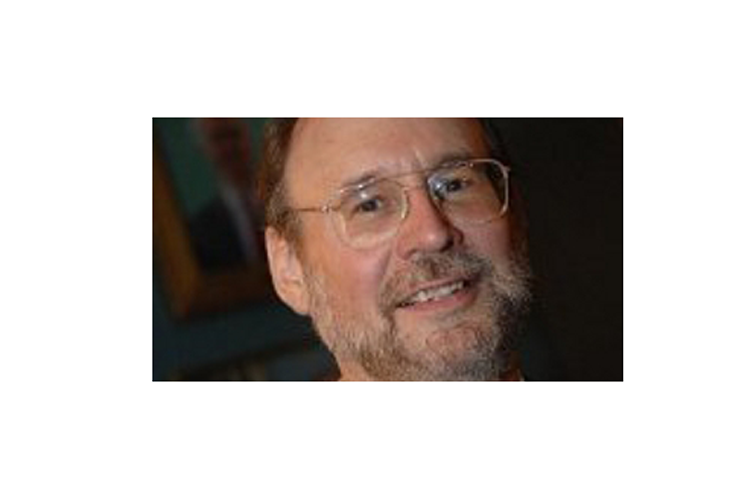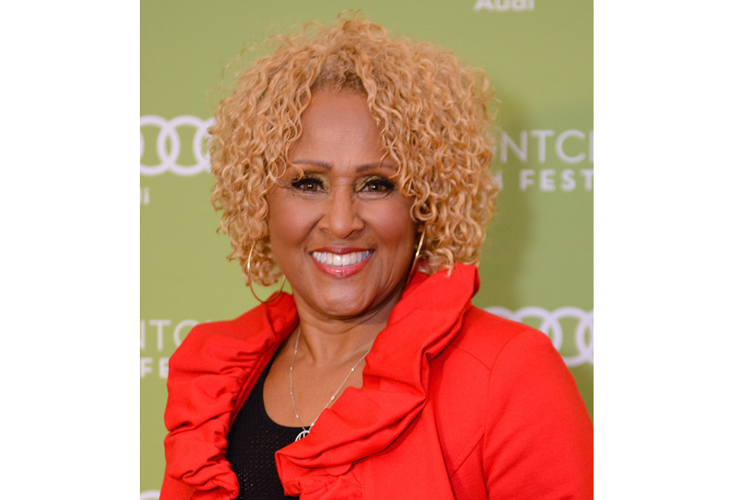I first learned about Douglas Prasher three years ago, when an algorithm we’d just developed made an unpredictable prediction: He should have been a recipient of the 2008 Nobel Prize.
Instead, the award had been given to three other scientists. Even more surprising was our inability to find Prasher anywhere. He wasn’t on the faculty at any university. We couldn’t locate him at an industrial research lab. In fact, as we started digging for him, we realized that he hadn’t written a research paper in nearly a decade. It was truly puzzling. This fellow, who, according to our algorithm, deserved a Nobel Prize, had seemingly disappeared off the face of the Earth.

In 2013, Hua-Wei Shen, an accomplished computer scientist from Beijing, joined my lab. Though new to the team, he was intimately familiar with our work. In addition to running a network science lab at his own university, he had also translated my previous book, Bursts, into Chinese. He eagerly joined our small but growing “success group.” Each time we begin a new project, we start with a journal club—a reading group that surveys the current scientific literature to understand what is being done in a particular area. Each of us reads a batch of papers and summarizes key findings for the rest of the lab. Given that a million papers are published each year, this is the only way we’ve found to explore the vast body of knowledge out there.
At one of these journal clubs, Hua-Wei presented a sociology paper that investigated credit allocation in science. As we discussed the issue, we realized how bizarre our profession’s credit protocols are. You have to be an insider to understand the nuances. Take, for example, the paper that reported the discovery of W and Z particles, which was authored by 137 scientists. Who walked away with the Nobel? The 105th and 126th authors, Carlo Rubbia and Simon van der Meer, of course. Somehow, the Nobel Committee manages to sort out who did what and who deserves the lion’s share of the credit, no matter where an author’s name lies. But how exactly?
We can map this trail to gauge a community’s perception of who deserves credit for a discovery.
As we discussed our profession’s strange process of credit allocation in our journal club, I challenged Hua-Wei. If the Nobel Committee could select the deserving scientist from among more than 100 authors, why couldn’t we?
Hua-Wei jumped on the problem, and within a few weeks, he’d developed an algorithm that, like a compass pointing north, located every Nobel Prize winner from extensive lists of contributing scientists with an ease that seemed almost magnetic. Regardless of whether the winner was in physics, where authors are sometimes listed alphabetically, or in biology, where a team’s leader is usually the last named, we could correctly foresee who would win. We were amazed by the algorithm’s accuracy. With remarkable ease, the program not only agreed with the Nobel’s decision to select Rubbia and van der Meer from among 135 authors, it was also able to do the same for all Nobel-winning papers in the past 30 years, without having to read any of them.
There were only a few cases where our algorithm and the Nobel Committee disagreed. And they were all juicy cases, stories of misallocated credit that created discord in the community and prompted concerns from the prizewinners themselves. One of those cases was particularly intriguing: Mysteriously, the algorithm kept insisting, like a GPS gone haywire because of a road closure, that the 2008 Nobel in chemistry should go to Douglas Prasher. The problem was, Douglas Prasher appeared to have disappeared off the face of the earth.
Until … we found him. No, he wasn’t hiding out in a clandestine government facility. Nor was he behind the firewall of a secretive, high-tech company. He was living in Huntsville, Alabama, driving a courtesy van at a Toyota dealership. The van that, you know, gives customers a ride back to work when they drop their cars off for a day in the shop.
Prasher was the first scientist to clone GFP, a luminous protein that makes jellyfish shine in the dark depths of the ocean. In essence, GFP is a tiny flashlight that researchers can attach to any protein, so when we inspect proteins under the microscope we can see exactly when they are produced, where they travel in a cell, and how and when they disappear. GFP is “a guiding star for biochemistry,” claimed the Nobel Foundation when it announced its award.
Prasher was the first to see GFP’s potential. He had been elbow-deep in the gelatinous muck of jellyfish carcasses as a young researcher, long before anyone considered them worthwhile to study. He didn’t just get his hands dirty, capturing the jellyfish using pool-skimming nets and extracting their bioluminescent proteins by the bucketful. He also built vast libraries of jellyfish DNA from frozen hand-harvested tissues. Most important, he was the first researcher to identify the gene encoding the particular light-emitting proteins that are used today in medical research. And, fully aware of the enormous potential of the fluorescent gene he’d discovered, Prasher even figured out a way to extract the material from the jellyfish and then clone it.
Today, virtually all molecular biology labs depend on his discovery. If you want to explore how tumors grow cancerous tissues, if you want to understand how the brain of a mouse works when it navigates a maze, or if you want to develop the next drug for diabetes, you need to use GFP. Few tools have had such an enormous impact on modern biology and medicine. So it was no surprise that the Nobel Committee wanted to honor someone for the discovery of the fluorescent protein. What was a surprise, though, was that the recipient wasn’t Prasher.
Our algorithm, applied to dozens of prizewinning discoveries, proved that the Nobel Committee rarely made mistakes. So what exactly went wrong in 2008? To find the answer, we needed to examine how credit is assigned to teamwork everywhere.
The mechanism behind Hua-Wei’s algorithm was simple: citation patterns—not only for the paper of interest, but for all papers written by the coauthors—leave a trail of impact. We can map this trail to gauge a community’s perception of who deserves credit for a discovery. If a scientist was key to an insight, his prior work was likely connected to it. And having struck gold, he typically continued to explore ideas in the same vein. Hua-Wei and I found that if we traced the career path of each member of a scientific team, we could accurately pinpoint the presumptive “owner” of a given discovery, which was almost always the researcher with the most consistent track record in that area.
Too much time spent in someone else’s shadow eclipses our contributions.
Here’s a left-field example. If I coauthored a paper with the pope, who would get the credit? Well, it depends. If the paper probes a deep theological question, and my contribution merely helps him use tools of network science to address the issue—which is the only way I could see contributing to a theological debate—then it’s obviously the pope’s paper. Theologists will cite our joint paper with other documents attributed to the papacy, and I’d just be some random name hitching a ride on the list of contributors. On the other hand, if the paper primarily addresses network science, the result would be entirely different. Then—forgive me my blasphemy—the paper is mine. The pope may have access to divine powers that offer him unique insights, and some of these insights may even have contributed the key idea to the paper. But because he has no track record in network science, I’m the relevant name. A Francis-Barabási or a Barabási-Francis paper on network science isn’t really a shared paper. It’s my paper.
For me, the most unexpected message behind the algorithm was this: When we allocate credit to the members of a team, who gets the credit has nothing to do with who actually did the work. We don’t dole out reward on the basis of who came up with the idea in the first place, who slaved for weeks, who showed up to meetings to graze the coffee and doughnuts, who jumped in at the last minute with a crucial suggestion, who had the eureka moment, or who yammered on and on but didn’t really contribute anything. The algorithm accurately selected Nobel Prize winners and handed them the win not by figuring out who did what. Rather, it did so by detecting how peers in the discipline paid attention to the work of some of the coauthors and ignored the work of the others. The predictive accuracy of the algorithm led us to our next insight about teams: Credit for teamwork isn’t based on performance. Credit is based on perception. Which makes perfect sense if we remember that success is a collective phenomenon, centered on how other people perceive our performance. Our audiences and colleagues allocate credit based on their perceptions of our related work and the body of work produced by our collaborators.
Credit allocation is guided by the same rich-get-richer phenomenon we see in every other area of success. Preferential attachment is not limited to earnings, visibility, and citations. The term also applies to credit. As an apologetic banker is quick to remind the loan applicant who wanders into her office with no borrowing history: We only give credit to people who already have credit.
And that means there are dangers to collaborating. For example, if I contributed to a paper by a postdoc in my lab—someone like Burcu or Dashun—including myself in the author list makes sense in theory. With a three-decade track record, my more recognizable name will stand out to colleagues outside the lab, increasing the odds that they’ll pay attention to the research. But there’s also a downside to this: Despite the years of heroic work that Dashun put into the papers we wrote about success, for example, once my name is on the author list, people will associate his discoveries with me. They will misdirect the lion’s share of credit on the paper simply because they’re more familiar with my work. That’s a problem that extends well beyond science.

You might think you’re in luck when offered a job working for a recognizable name in your field. Not only will you have the chance to rub elbows with a luminary, you’ll be able to collaborate on important projects, boosting your résumé. Each team member involved in an important endeavor can lay claim to the resulting product. You can learn from the best, even potentially make your way up the ladder to a position of leadership. And you can use this association to your advantage when you seek other gigs. Imagine getting a letter of recommendation from a leading figure in your profession, someone who can legitimately attest to your abilities.
I tell my students that working with a recognized name is the best way to build a reputation in science … initially. At some point, though, you need to break out on your own. This advice isn’t just gleaned from my experience as a scientist. It’s actually based on science. For example, our algorithm showed that when it was first published in 1985, the paper that led to the 1997 Nobel Prize in Physics “belonged” to Arthur Ashkin. Of the five authors, he was the senior scientist, far better known in the field than his up-and-coming coauthor, Steven Chu. In fact, the algorithm gave Ashkin 79 percent of the credit, since the paper was frequently co-cited with other papers Ashkin had published earlier on optical tweezers. Steven Chu, on the other hand, initially got only 5 percent of the credit. Yet, over time, ownership of the paper shifted because Chu continued to publish other high-impact papers on the same theme and Ashkin didn’t. Slowly people began to associate Chu with the groundbreaking research. Our algorithm captured this momentum, shifting the credit over to Chu. So by 1997, when the Nobel Committee doled out its awards, Chu took home the prize.
In other words, too much time spent in someone else’s shadow eclipses our contributions. We get relegated to the periphery when we pursue piecemeal projects, hopping around between various lines of inquiry. A better approach: Stake a claim in uncharted territory, like one of my former postdocs, Marta Gonzalez, did. Marta began analyzing human mobility as a postdoc in my lab. When our first joint paper was published, I walked away with the bulk of the credit. Yet, in the 10 years since, she has become the expert on the topic, utterly usurping me. Today, her name comes up when human mobility is discussed. I might have served as an ambassador for her, coauthoring her first papers, but she ultimately owned the topic, building a name for herself in the field.
Frankly, it’s not always easy to do what Marta did. But she isn’t alone. As we’ll see next, other women have learned how to move from the shadows into the spotlight, and, by taking control of their own credit, ultimately seeing their just reward.
Darlene Love was on her hands and knees in a bathroom when she heard her own voice on the radio singing a Christmas song. The tune, called “Christmas (Baby Please Come Home),” appeared on a seasonal album produced by Phil Spector in 1963. A buoyant call-and-response number, the now-classic song filled her with the bittersweet longing evoked by the lyrics. Not for a faraway lover, but for a faraway life. The luxurious bathroom where she found herself in the early 1980s, after all, was not her own—a reward for the many musical hits she’d belted out on famous records. She was scrubbing toilets for rich people to pay her bills.
Love has been singing since birth, practically, starting in the choir at her father’s church. She began singing professionally at 16, in a trio called the Blossoms. They sang backup for a slew of bands in the 1950s and ’60s, imbuing records by Elvis Presley and other white musicians with a black gospel sound. If there’s a “shoo-op” on an oldies tune, Love probably crooned it. Da doo ron-ron-ron, da doo ron-ron? That’s pure Darlene Love. Her voice is effortlessly youthful on these recordings, as clear as a mountain stream.
Our perception of who deserves credit is often riddled with sexist and racist prejudices.
During that era, Love was also the lead singer on a few tracks, but as a black woman in a music world dominated by white men, she had no control over the production or distribution of her music. In fact, she signed a deeply exploitive contract with producer Phil Spector that treated her like a disembodied voice that could be employed for others’ benefit. In a stunning example, the hit “He’s a Rebel,” featuring Love’s crisp voice, was intentionally misappropriated by Spector for the Crystals, another group he managed. Teens across the country watched the Crystals passionlessly lip-synch the track on TV, unaware of who the true singer was.
By the early 1980s, Love had given up. She continued to sing backup for a few big names, occasionally stepping into a recording studio or onto a stage, but she also had to take on cleaning gigs to make ends meet. So when the sound of her own voice echoed across the tile in the bathroom, she decided to try something different. “I just looked up and I said, ‘Okay, all right, Darlene. This is not where you’re supposed to be,’ ” she recalls in the 2015 documentary 20 Feet from Stardom. “ ‘You’re supposed to be singing. There’s a whole world out there that wants to hear you sing.’ ”

Breaking through to that world wasn’t easy. Love had been a team player for most of her life and hadn’t cultivated the support network of professionals that push stars forward. Never mind that back then there was almost no precedent for successful black female solo singers. Once she decided to change course, however, she began to slowly emerge from the background. First, she managed to book an annual appearance on David Letterman to sing “Christmas (Baby Please Come Home),” breathing life into an old classic and making it famous again. Next, she landed a role as Danny Glover’s wife in Lethal Weapon. Continually trying to get her face and name out there, she then sang a duet with Bette Midler and released several solo albums.
Eventually the night arrived when, just shy of 70, Darlene Love took front-and-center stage, her coppery hair gleaming in the spotlights, her smile radiating. With her maid days long gone, her voice soared, reaching every corner of the large room, where it was greeted by the most thunderous applause she’d ever received.
This time, however, she was not singing backup. Bruce Springsteen, grinning as he played guitar, was the one backing her, as she hit the notes, high and low, that surely brought many to tears. The stage she now commanded was at the Rock & Roll Hall of Fame. Darlene Love was there to be inducted for her lifetime contribution to music.
Love’s story is one of triumph against enormously formidable odds. She succeeded because, guided by the strength of her own voice, she fought to rectify the credit that had been deliberately snatched from her as a young woman. At a certain point, Love refused to be a nameless team member any longer. By stepping into the spotlight and utilizing the relationships she’d built in the industry, she made sure that each of her projects could be directly linked to her. Instead of working for the many stars she’d sung backup for, she worked with them.
Sadly, not all of her contemporaries had her foresight or her doggedness. Credit decisions are based on perception, not performance, and our perception of who deserves credit is often riddled with sexist and racist prejudices. Here’s one shocking example that I came across recently. Female economics professors are twice as likely to be denied tenure as their male colleagues. We suspected this, since a “tenure gap” is just one component of a long data trail that documents the obstacles women face in science. The most unexpected aspect, though, was the reason behind the tenure denial. It turns out that the disparity can’t be explained by differences in productivity, quality, confidence, or competitiveness between men and women. Nor can it be explained, even, by the professional penalty some women pay for their family commitments—though that does affect how long it takes to be considered for tenure. What, then, could explain such a troubling disparity?
The data shows that women economists who exclusively work alone are just as likely to receive tenure as men. Regardless of gender, every solo paper an economist writes increases his or her chances of tenure by 8 or 9 percent. Yet a gap suddenly appears once a woman coauthors a paper, and the chances only widen with each collaborative project she participates in. Instead of increasing her odds, every coauthored paper she contributes to lowers them. The effect is so dramatic, in fact, that women who exclusively collaborate face a yawning tenure chasm. The research shows that when women coauthor, they’re accorded far less than half the usual benefits of authorship. And when women coauthor exclusively with men, they see virtually no gains. In other words, female economists pay an enormous penalty for collaborating.
To be clear, men pay no price for collaborative work. They can work alone, in partnerships, or in groups, and their chances of tenure will remain the same. Women, on the other hand, collaborate at their own peril. From a tenure perspective, if you’re a female economist publishing with men, you might as well not publish at all.
Douglas Prasher, on the other hand, should have borrowed Love’s entire instruction manual. Not to single him out unfairly, since he’s familiar with unfairness already. Besides, all of us could learn a lot from Darlene Love. But Prasher wasn’t just passed over. He was passed over for a Nobel Prize.
Prasher, a young scientist pursuing an esoteric subject, did what most high-achieving scientists do early in their careers. He had a fantastic idea that he followed doggedly. Never mind that his subject attracted little encouragement from his community. But then again, no one paid attention to Albert Einstein, a patent clerk, when he was in his most productive period, either. In Prasher’s case, very few of his colleagues took his work on GFP seriously. A presentation that he’d given just before his tenure review at the marine biology lab where he worked in Woods Hole, Massachusetts, had gone badly. Then his grant proposal was turned down, which meant he couldn’t raise the funds to continue his research. The stress was so grating that his 3-year-old daughter said to his wife, “Papa doesn’t smile anymore.” Breaking in a moment of career-crushing despondency, Prasher told the tenure committee to suspend his review. He quit. But before he took a job at the Department of Agriculture, he did something unusual. Hoping that his work would not be in vain, Prasher mailed the cloned GFP gene—the product of his lonely toil—to two other researchers. The gesture was a genuinely friendly and unselfish one. The names scrawled on the padded envelopes belonged to the only scientists who had contacted him expressing interest in his research.
Sixteen years later, the recipients of Prasher’s envelopes, Martin Chalfie and Roger Tsien, were in Stockholm accepting the Nobel Prize. Using the gene Prasher cloned, Chalfie had gone on to show the medical world that Prasher’s vision had been correct all along: You could indeed use GFP in living organisms. By inserting GFP into a roundworm, Chalfie made proteins fluoresce, a trick now used by thousands of biologists. This was what Prasher planned to do next, had he had the money and opportunity to pursue the research. Tsien took Prasher’s gene and mutated it, creating new strains of GFP that glowed in an array of vivid colors. And so, by utilizing Prasher’s discovery in innovative ways, the inheritors of his gene published a series of groundbreaking papers about its application, slowly stepping into the role of “discoverers.” With Prasher gone, they became the face of GFP.
Seventeen years after leaving academia, Prasher was in his Huntsville kitchen one morning when he heard the news about the Nobel over the radio. A local newscaster, speaking in the region’s melodious drawl, mispronounced Tsien’s name. Prasher decided to call the station. He did so not to claim credit. In fact, he said nothing about the key role he had played in the discovery. Ever meticulous, he was calling to correct the newscaster’s pronunciation. Then he finished his breakfast and headed off to the dealership, wearing his required uniform, a blue polo shirt and khakis. Balloons adorned the dealership lot, floating above a horizon of shiny cars. Sitting in the dilapidated office, working a job that didn’t pay enough, Prasher was flooded with disappointment. Not so much for missing out on the prize. More because he felt like his obscurity was his own fault. It wasn’t in his personality to thrive in the spotlight, and he wasn’t comfortable reaching out to the people who might have helped him.
Albert-László Barabási is the Robert Gray Dodge Professor of Network Science and a Distinguished University Professor at Northeastern University, where he directs the Center for Complex Network Research.
Excerpted from The Formula: The Universal Laws of Success. Copyright © 2018 by Albert-László Barabási. Used with permission of Little, Brown and Company, New York. All rights reserved.
Lead image: Santi S / Shutterstock


























